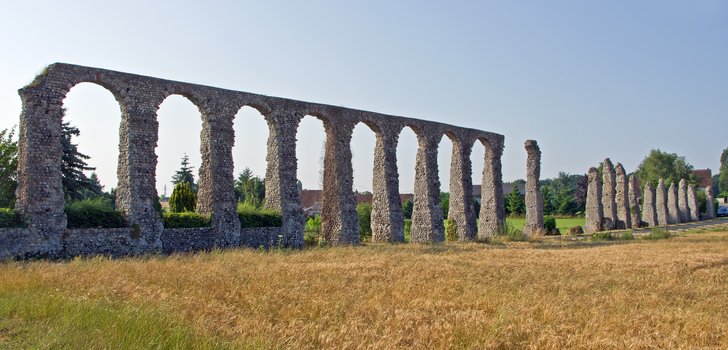Nieuws
Virtual water trade in the Roman world

oman aqueduct of Luynes (Credit: Daniel Jolivet)
The Roman World used trade of grain (actual virtual water trade) as a means to be more resilient against climate change. At the same time, as population grew as a result of a steady supply of food, it became more dependent on trade and thus more sensitive to political or climatological disturbances of the trade network. These are the main conclusions from a study by
The Roman World used trade of grain (actual virtual water trade) as a means to be more resilient against climate change. At the same time, as population grew as a result of a steady supply of food, it became more dependent on trade and thus more sensitive to political or climatological disturbances of the trade network. These are the main conclusions from a study by Brian Dermody and coworkers from the Netherlands and the US.
The paper appeared in Hydrology and Earth System Sciences:
Dermody, B. J., van Beek, R. P. H., Meeks, E., Klein Goldewijk, K., Scheidel, W., van der Velde, Y., Bierkens, M. F. P., Wassen, M. J., and Dekker, S. C.: A virtual water network of the Roman world, Hydrol. Earth Syst. Sci., 18, 5025-5040, doi:10.5194/hess-18-5025-2014, 2014.
See the press release of EGU!
It got quite some media attention. For instance in Smithsonian Magazine.





